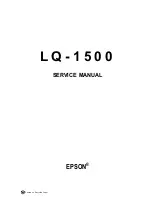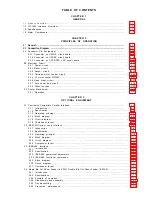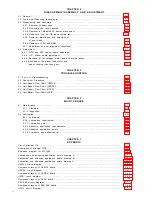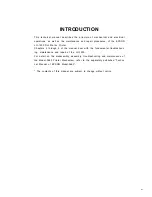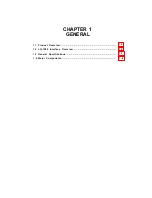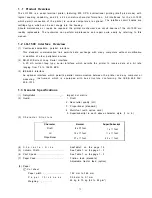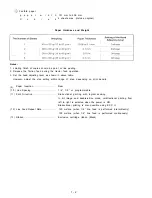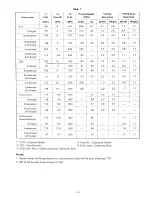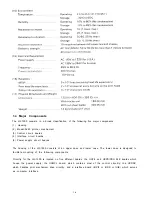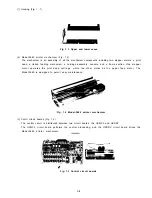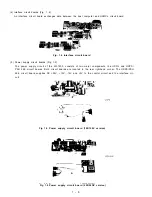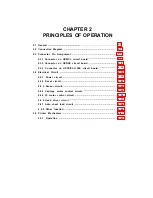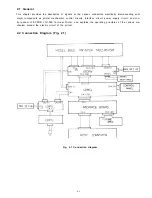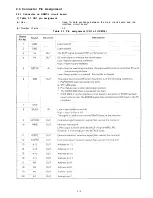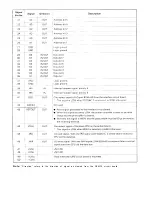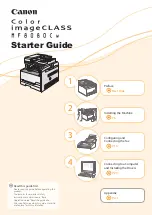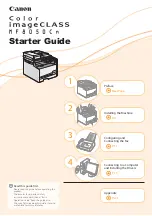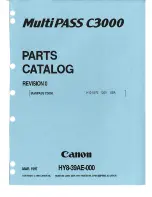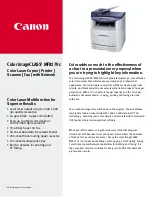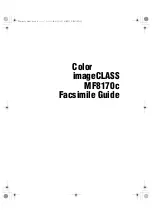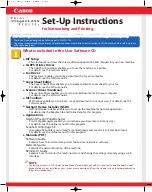Summary of Contents for LQ-1500
Page 1: ...L Q 1 5 0 0 SERVICE MANUAL EPSON a9Printed on Recycled Paper ...
Page 8: ...Table 1 1 3 ...
Page 16: ...Note Direction refers to the direction of signal as viewed from the UXMCL circuit board ...
Page 18: ...2 6 ...
Page 21: ...Note Direction refers to the direction of signal as viewed from the UXDRV circuit board 2 9 ...
Page 39: ...Fig 2 26 CR motor drive circuit 2 2 7 ...
Page 42: ...Table 2 17 Data of decelerate time ...
Page 43: ...Fig 2 29 Deceleration and stop at home position In case of 1163 769 pps ...
Page 48: ...Fig 2 35 Paper feed timing chart In case of N pulse paper feed N 5 ...
Page 56: ...3 Correspondence between dot wires and FPC terminals Fig 2 45 Printhead connector 2 4 4 ...
Page 64: ...3 3 ...
Page 66: ...3 1 3 3 Handshaking of the parallel interface Fig 3 1 Parallel interface timing 3 5 ...
Page 68: ...3 1 5 Circuit diagram 3 7 ...
Page 69: ...Fig 3 4 Component layout of IUPIF board ...
Page 73: ...D DIP 4 Table 3 10 Setting of DIP 4 3 12 ...
Page 80: ...3 2 4 Block diagram 3 19 ...
Page 81: ...3 2 5 Circuit diagram IURS CIRCUIT BOARD UNIT NO Y49520300000 Fig 3 9 IURS circuit board 3 20 ...
Page 82: ...Fig 3 10 Component layout of IURS board ...
Page 90: ...3 3 5 Block diagram m x 6 IA 3 29 ...
Page 93: ...Fig 3 17 Component layout of IUIE ...
Page 115: ...3 54 ...
Page 116: ...3 55 ...
Page 117: ... Fault of selection and feed 3 56 ...
Page 118: ... Fault of paper guides1 3 57 ...
Page 119: ... Fault of output selector 3 58 ...
Page 120: ... Other faults Paper is fed at an angle 3 59 ...
Page 123: ......
Page 144: ... Mechanical components Model 3660 Y450590100 Maintenance tool 5 3 ...
Page 145: ...5 2 Check out Procedure Repair by Unit Replacement 5 4 ...
Page 146: ...5 5 ...
Page 147: ...5 6 ...
Page 148: ...5 7 ...
Page 149: ... Carriage does not return to home position when power switch is turned on 5 8 ...
Page 150: ... Carriage does not move ...
Page 151: ...5 10 ...
Page 152: ... Control panel indication is faulty Paper feeding motor does not stop 5 11 ...
Page 153: ... Switch on control panel can operate in the on line state 5 12 ...
Page 154: ... Sheet loading does not work properly ...
Page 156: ... Carriage does not move in Self Printing Test 2 5 15 ...
Page 157: ... Paper feeding is not made in Self Printing Test Printing is faulty 5 16 ...
Page 158: ... Operation is abnormal when connected with host computer 5 17 ...
Page 159: ...5 3 Unit Repair Flow Chart UXMCL 5 18 ...
Page 160: ...1 Printing Troubles 5 19 ...
Page 161: ...5 20 ...
Page 162: ... ...
Page 163: ...5 22 ...
Page 164: ...5 23 ...
Page 165: ...2 Carriage Troubles 5 24 ...
Page 166: ...5 25 ...
Page 167: ...5 26 ...
Page 168: ...5 27 ...
Page 169: ...5 28 ...
Page 170: ...3 Paper Feeding Troubles 5 29 ...
Page 171: ...5 30 ...
Page 172: ...5 31 ...
Page 173: ...4 Sheet Loading Problem 5 32 ...
Page 174: ...5 4 Unit Repair Flow Chat t UXDRV 5 33 ...
Page 175: ...1 Printing Troubles 5 34 ...
Page 176: ...5 35 ...
Page 177: ...2 Carriage Troubles 5 36 ...
Page 178: ...3 Paper Feeding Troubles 5 37 ...
Page 179: ...5 38 ...
Page 180: ...4 Sheet Loading Troubles 5 39 ...
Page 181: ...5 5 Unit Repair Flow Chart IUPIF 5 40 ...
Page 182: ...5 41 ...
Page 183: ...5 6 Unit Repair Flow Chart UXPS 5 4 2 ...
Page 184: ... 24 voltage is not output The malfunction of the primary 5 43 ...
Page 186: ...The voltage of 24 is low Excessive voltage is output 5 45 ...
Page 187: ... 5 is abnormal 5 46 ...
Page 188: ...Vx is abnormal 12 is abnormal 5 47 ...
Page 195: ...List of Principal lC s Table 7 1 7 1 ...
Page 209: ...Fig 7 16 Pin configuration 7 15 ...
Page 210: ... 2 Block Diagram 8042 Fig 7 17 Block diagram 7 16 ...
Page 216: ......
Page 229: ...EXPLODED DIAGRAM FOR LQ 1500 12OV VERSION 7 35 ...
Page 230: ......
Page 231: ...7 37 ...
Page 232: ...7 38 ...
Page 233: ......
Page 234: ......
Page 235: ......
Page 236: ......
Page 237: ...UXPS CIRCUIT BOARD UNIT NO Y45020300000 7 43 ...
Page 238: ......
Page 239: ......
Page 240: ......
Page 241: ......

